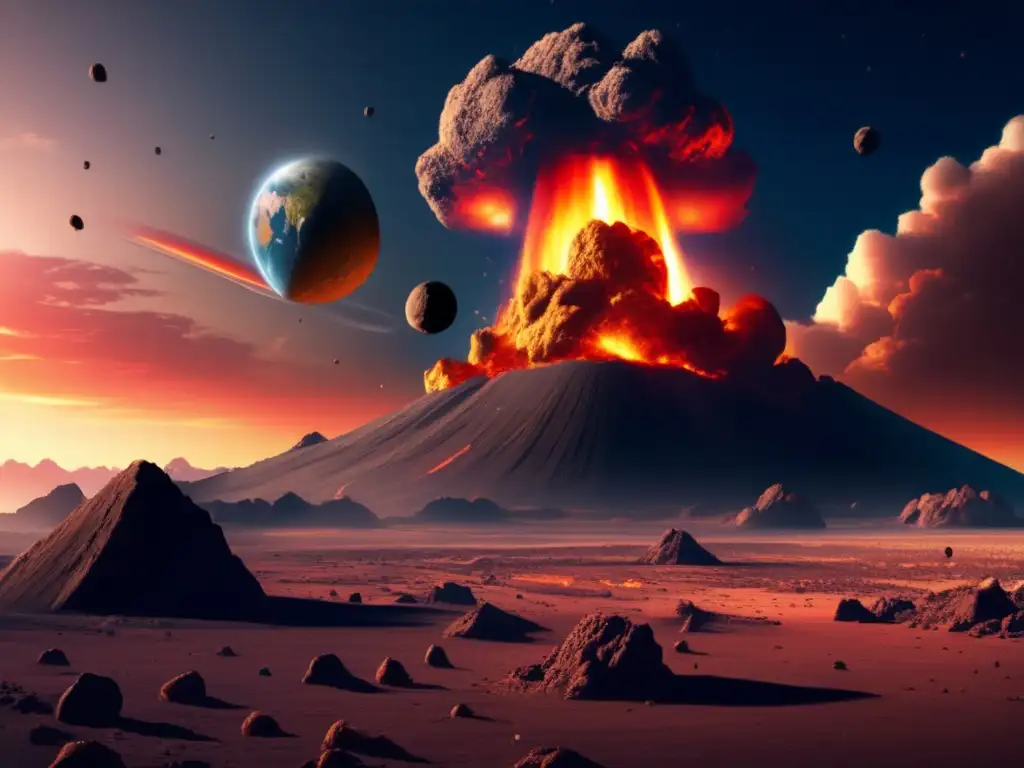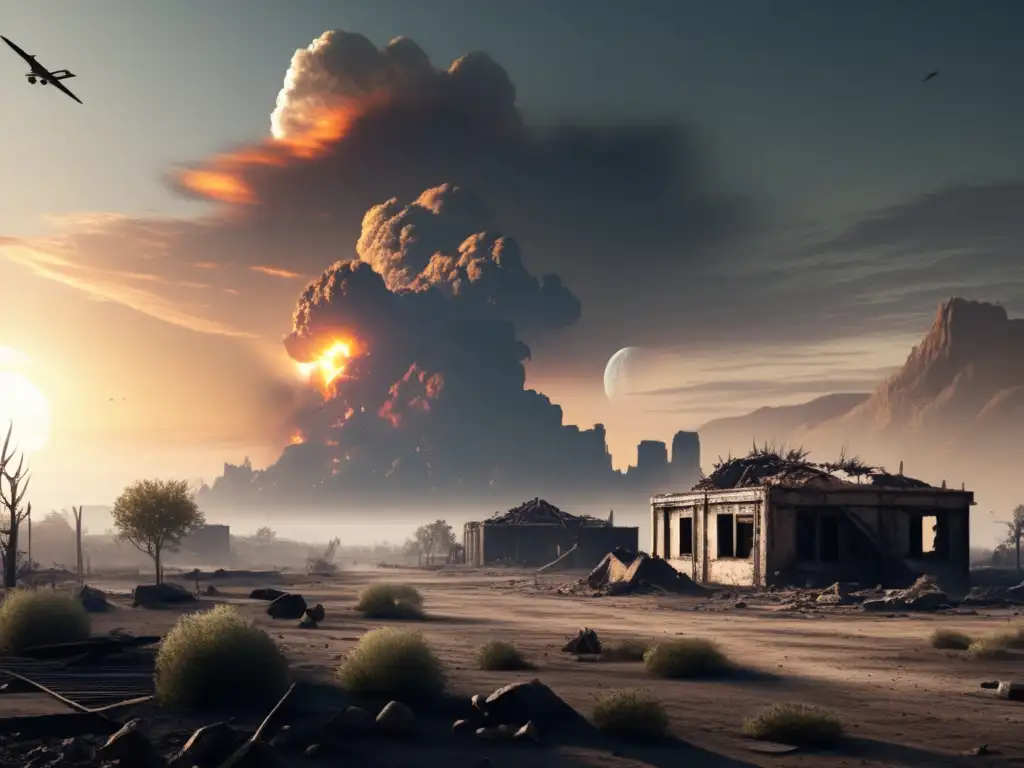Surviving The Impact: Life After Asteroid Strikes

Introduction
Asteroid impacts are one of the most catastrophic events that could happen to our planet. These events have occurred in the past, and they will likely happen again in the future. The impact from such an event can cause unimaginable destruction, including tsunamis, earthquakes, wildfires, and a potential global winter. The good news is that there are ways to prepare and potentially survive such an impact. This article will discuss the possible effects of an asteroid impact, how to prepare for one, and what life may look like after the event.
The Effects of an Asteroid Impact

Tsunamis
If the asteroid lands in the ocean, it could trigger a tsunami with waves that could reach hundreds of feet high. These waves would devastate coastal regions, wiping out anything in their path for miles inland. In 2004, the Indian Ocean tsunami killed over 230,000 people, highlighting the destructive power of such events.
Earthquakes and Volcanic Eruptions
Due to the immense energy released by the impact, the ground would shake, causing earthquakes. Additionally, the asteroid could trigger volcanic eruptions due to the pressure changes in the Earth's crust caused by the impact. These events could cause even more damage to areas already affected by tsunamis or wildfires.
Wildfires
If the asteroid strikes a region with a dry climate, it could start massive wildfires that would spread quickly due to the high wind speeds produced by the impact.
How to Prepare for an Asteroid Impact

Early Detection
The best way to prepare for an asteroid impact is to detect it in advance. NASA's Planetary Defense Coordination Office, in collaboration with other international organizations, actively tracks asteroids and comets that could pose a potential threat to Earth. This early warning system gives authorities time to prepare, evacuate, and minimize damage.
Evacuation Plans
Authorities should have a detailed evacuation plan in place that takes into account the potential effects of an asteroid impact. They should identify safe zones and routes, provide shelter, food, and medical attention to affected populations, and coordinate with rescue teams.
Underground Bunkers
Some countries, like Switzerland, have built underground bunkers designed to withstand natural disasters, including asteroid impacts. These bunkers have air filtration systems, backup generators, and supplies to support people living inside for months or even years.
Life After an Asteroid Strike

Global Winter
The impact of an asteroid can cause dust, debris, and water vapor to be thrown into the atmosphere, creating a "global winter" that could last months or years. This would cause massive climate changes worldwide, affecting crops, animals, and humans.
New Opportunities
The aftermath of an asteroid impact doesn't have to be all bleak. It could create new opportunities for scientific research and development, such as studying the crater and its surrounding environment, inventing new technologies to manage waste and pollution, and exploring new ways to rebuild sustainable living environments.
Slow Recovery
The recovery process after an asteroid impact would likely take decades or even centuries. It would involve reconstructing infrastructure, regenerating ecosystems, and rebuilding communities. During this period, people would need to learn how to live with limited resources and adapt to changing climates.
Frequently Asked Questions

-
Can we prevent an asteroid impact?
While it's not possible to prevent an asteroid from hitting Earth, it is possible to deflect or disrupt its trajectory using various methods, including a nuclear explosion, gravity tractor, kinetic impactor, and laser ablation.
-
What do I do if an asteroid is heading towards my area?
If you receive a warning that an asteroid impact could happen in your area, follow the evacuation plan provided by your local authorities. If you can't evacuate, take shelter in a sturdy building or underground bunker until the event has passed.
-
How long does it take for life to return to normal after an asteroid impact?
The recovery process after an asteroid impact could take anywhere from decades to centuries, depending on the severity of the impact and the availability of resources.
-
Are there any benefits to an asteroid impact?
While the destruction caused by an asteroid impact is significant, it can create new opportunities for scientific research and development, as well as promote environmental sustainability.
-
What is NASA doing to prevent asteroid impacts?
NASA has developed several programs, including the Asteroid Redirect Mission and the Double Asteroid Redirection Test, designed to study, detect, and deflect asteroids that could pose a threat to Earth.
Conclusion
Asteroid impacts are a real and significant threat to our planet, but with the right preparation, we can minimize damage and potentially save lives. It is essential to stay informed, follow evacuation plans, and have the necessary resources to survive such an event. While the aftermath of an asteroid impact would be challenging, it also presents opportunities for scientific research and technological innovation. Remember to stay safe and be mindful of the continued importance of asteroid research and detection.
Additional Resources

For more information on asteroid impacts and related topics, visit the following resources:
- NASA's Planetary Defense Coordination Office
- Center for Near Earth Object Studies
- B612 Foundation
- European Space Agency - Near Earth Objects
 Patterns In The Chaos: Predicting Future Asteroid Impacts
Patterns In The Chaos: Predicting Future Asteroid Impacts The Role Of Asteroids In Earth's Climate Evolution
The Role Of Asteroids In Earth's Climate Evolution Impact Winter: Understanding The Global Cooling Effect
Impact Winter: Understanding The Global Cooling EffectIf you want to discover more articles similar to Surviving The Impact: Life After Asteroid Strikes, you can visit the Asteroid Impacts category.
Leave a Reply

Articulos relacionados: